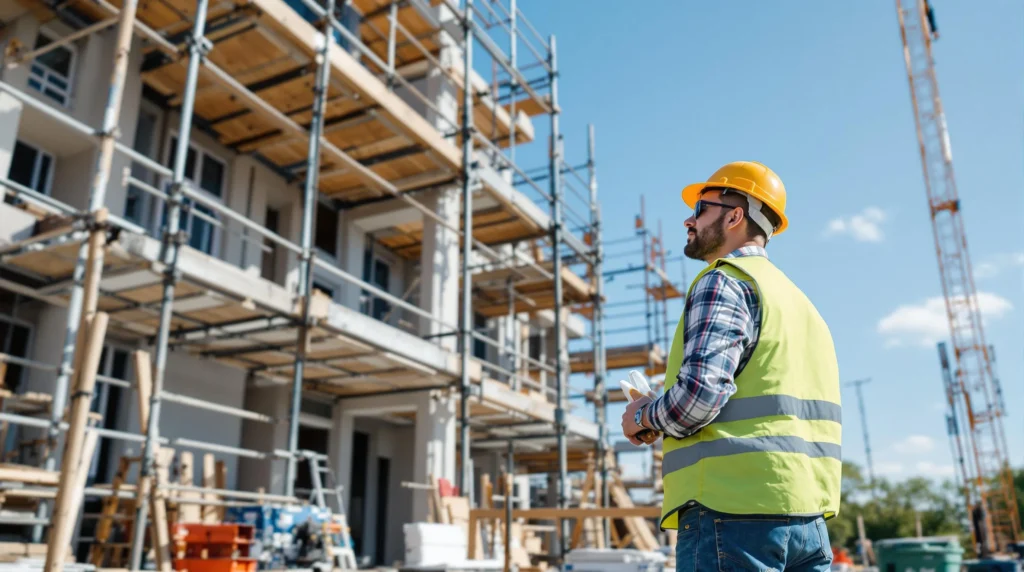The Role of Structural Engineering in Powerline Infrastructure
This post was originally published on this site
Powerlines are the backbone of modern energy distribution, delivering electricity to homes, businesses, and industries across vast distances. But the physical infrastructure that supports these powerlines—whether it’s towering steel lattice structures or durable poles—isn’t just built to hold wires. It’s designed with safety, efficiency, and resilience in mind, thanks to the expertise of structural engineers.
Structural engineering plays an indispensable role in every phase of powerline infrastructure, from planning and design to construction and maintenance. This article explores how these professionals ensure the reliability and safety of the systems that power our daily lives.
What Does Structural Engineering Involve in Powerline Infrastructure?
Structural engineers focus on creating systems that can withstand the physical demands of their environment. For powerline infrastructure, this means designing components—such as towers, poles, and foundations—that can endure natural forces like wind, ice, and seismic activity while carrying the electrical load.
This role is not limited to just the technical aspects. Engineers also collaborate with other specialists, including powerline technicians, who physically construct and maintain the infrastructure. For those interested in learning how to join this essential workforce, consider Starting a Career in Ontario’s Powerline Industry.
Key Contributions of Structural Engineers
1. Designing for Safety
Safety is a top priority in powerline infrastructure. Structural engineers calculate the loads and stresses that each component will face, ensuring they meet or exceed safety standards. This includes accounting for:
- Wind loads: Tall powerline towers are subjected to high winds, especially in open areas. Engineers design them to remain stable and functional under extreme gusts.
- Ice and snow accumulation: In colder climates, ice and snow can add significant weight to wires and structures. Engineers incorporate this additional load into their calculations to prevent collapses.
- Seismic resilience: In earthquake-prone regions, structures must be flexible enough to absorb and dissipate seismic energy without breaking.
2. Supporting Longevity
Powerline infrastructure is a long-term investment. Structural engineers select materials and designs that minimize wear and tear over decades. For example:
- Using weather-resistant coatings on steel to prevent corrosion.
- Employing composite materials for poles in areas with extreme environmental conditions.
By prioritizing durability, structural engineers help utility companies reduce maintenance costs and extend the lifespan of infrastructure.
3. Adapting to Terrain
Not all locations are ideal for powerline construction. Engineers must adapt their designs to suit challenging terrains, such as:
- Rocky areas: Requiring specialized foundation techniques.
- Floodplains: Where structures need to be elevated or reinforced to prevent water damage.
- Forested regions: Requiring consideration for fire risks and tree interference.
Collaboration With Other Experts
Structural engineering is just one piece of the puzzle in powerline infrastructure. Engineers work closely with utility planners, environmental scientists, and technicians to bring projects to life. For instance:
- Utility planners determine the most efficient routes for powerlines.
- Environmental scientists assess the impact on local ecosystems.
- Powerline technicians, who build and maintain the infrastructure, ensure the plans are executed safely and effectively.
The collaboration between engineers and technicians is particularly crucial. For those looking to start their journey in this industry, becoming a powerline technician offers a hands-on way to contribute to building and maintaining critical infrastructure.
Challenges in Powerline Structural Engineering
1. Balancing Cost and Performance
Designing robust systems is essential, but it must also be cost-effective. Engineers are tasked with finding innovative solutions that meet safety and durability standards without inflating budgets. This might involve using prefabricated components or optimizing materials for specific conditions.
2. Climate Change
The changing climate is introducing new challenges, such as more frequent severe storms, prolonged heat waves, and rising sea levels. Engineers are now designing infrastructure that can withstand these evolving conditions, ensuring resilience in the face of uncertainty.
3. Integration of New Technologies
The energy grid is undergoing significant changes as renewable energy sources like solar and wind become more prevalent. Structural engineers must adapt powerline designs to accommodate these changes, such as supporting higher-capacity transmission lines or incorporating smart grid technology.
Innovations in Structural Engineering
1. Advanced Materials
Modern materials like fiber-reinforced composites are lighter, stronger, and more resistant to environmental damage than traditional options like wood and steel. These advancements are making powerline infrastructure safer and more sustainable.
2. Digital Modeling and Simulation
Engineers now use cutting-edge software to model powerline structures and simulate their behavior under various conditions. This allows for more precise designs and the ability to identify potential weaknesses before construction begins.
3. Modular Construction
Prefabricated components are increasingly being used to simplify powerline construction. These modular designs are easier to transport and assemble, reducing labor costs and construction time.
The Future of Powerline Infrastructure
As demand for electricity grows and grids expand to accommodate renewable energy sources, structural engineering will continue to play a pivotal role. Engineers are already looking ahead to innovations like:
- High-voltage direct current (HVDC) systems, which require specialized structures to support longer-distance energy transmission.
- Designs that blend seamlessly into urban environments, minimizing visual impact.
- Infrastructure that can withstand increasingly extreme weather patterns.
Conclusion
Structural engineering is the backbone of powerline infrastructure, ensuring that these critical systems are safe, durable, and reliable. From designing resilient towers to adapting structures for challenging terrains, engineers play a vital role in keeping the lights on.
For those interested in entering this essential field, powerline jobs offer a rewarding opportunity to work directly with the infrastructure that powers communities. Whether on the design table or in the field, every role contributes to building a safer and more sustainable energy future.





Responses